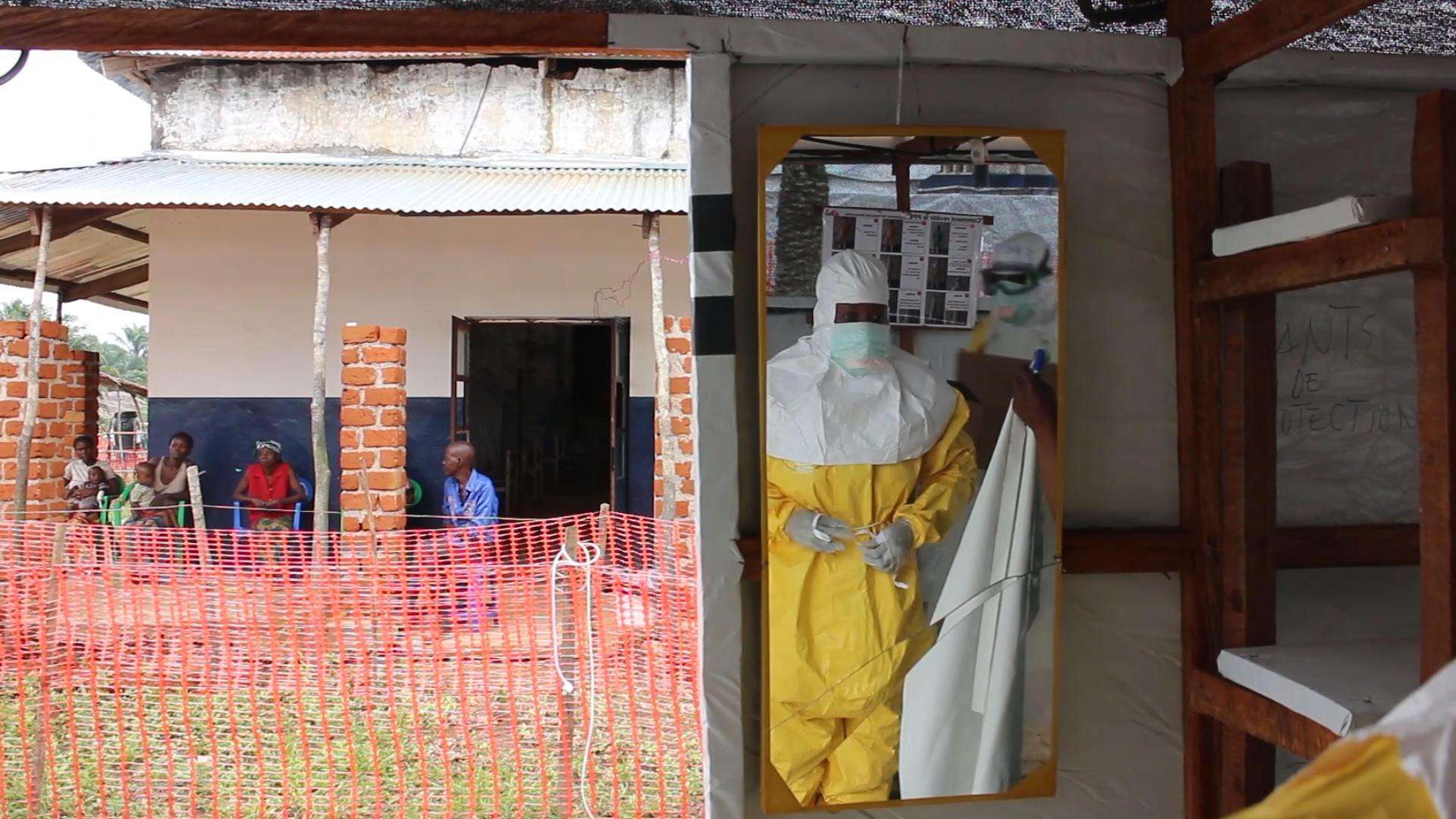This summer Democratic Republic of the Congo (DRC) suddenly found itself facing two outbreaks of Ebola on opposite ends of a vast country, new threats brought by the COVID-19 pandemic, as well as a major measles epidemic and other health emergencies.
The latest Ebola outbreak—declared on June 1 in Equateur province, in the western part of the country—is DRC’s eleventh recorded outbreak of this highly infectious disease. So far, it has spread to 11 health zones in the province. As of September 2, a total of 110 cases have been recorded in Equateur province (104 confirmed, 6 probable), and 47 people have died of Ebola.
The response to this new Ebola epidemic does not face the kinds of security challenges that affected the response to the tenth Ebola outbreak—the country’s worst ever, which was first announced in August 2018 and declared over on June 25, 2020. There are nevertheless significant logistical challenges.
Doctors Without Borders/Médecins Sans Frontières (MSF) has sent teams to the health zones of Bolomba, Bikoro, Monieka, Ingende, and Lotombe in order to curb the spread of the disease, support community surveillance, and provide rapid treatment to patients living in remote areas. Equateur province is four times the size of Belgium, with some health zones very hard to reach and only accessible by river using canoes or after hours of difficult transport by rough roads through the forest. Only one helicopter is available for some 15 humanitarian organizations trying to move around the region.
“MSF's emergency team permanently has a pre-positioned stock with vehicles, motorcycles, and motors that can be installed on boats or canoes,” says Mathias Dembo, MSF logistics coordinator. “We deploy these stocks according to the difficulties of the areas. And in Equateur province, challenges are massive. To reach the health zone of Bolomba, for example, we had to go up the Likelemba river with all the equipment and our team on canoes.”
Getting closer to the hotspots
“The epidemic is moving with people by land and river to remote areas in a province where infrastructure is lacking and villages are far from each other,” said Dr. Maria Mashako, MSF medical coordinator. “That’s why MSF is setting up a decentralized response and deploys our teams in the most remote, affected health areas, with small structures easily accessible to the communities.”
As of September 1, MSF teams are supporting nine treatment and isolation centers in five health zones to provide care as close as possible to the communities where cases are currently being recorded.
In Bolomba health zone, in addition to the support provided to the Ebola treatment center at the general hospital, we set up two small treatment and isolation centers in the remote health areas of Boso Mondomba and Yuli. The same decentralized approach has been adopted in the health zones of Monieka and Bikoro, where MSF is supporting four small care and isolation structures in difficult-to-access health areas.
“We do not limit ourselves to supporting the response to the Ebola epidemic alone,” says Dr. Mashako. “We are also supporting health centers in the hotspots and on the major axes of Bolomba and Bikoro in order to guarantee the continuity of primary health services there and allow early detection of suspected cases. This is done, for example, by donating drugs, training local medical personnel on Ebola, or strengthening infection prevention and control measures in the facility.”
Community engagement is key
Little information is circulating on Ebola in the province, and the epidemic is affecting some health zones for the first time ever. That’s why our health promotion teams are working with the DRC Ministry of Health to strengthen awareness and community-based surveillance. In Bolomba, Bikoro, and Monieka, this is one of the key activities done by MSF.
“My daughter died of Ebola,” says Samwengi Bokuma. “Two days later, I was also hospitalized. I was luckier. I survived. To prevent further tragedies in the community, I joined the MSF outreach team to share my story with my community. To explain to them what the symptoms of the disease are.”
Dr. Mashako explains why such outreach efforts are essential: “This community-based approach allows communities to detect suspected cases and quickly escalate alerts. It leads to an ownership of the response to the epidemic by the communities themselves.”
These decentralized and community-based approaches to responding to the outbreak are also complemented by a vaccination program supported by other partners in the response. Since the start of the vaccination efforts on June 5, the ZEBOV-GP vaccine—which was also used in DRC’s northeastern provinces during the last epidemic—has been administered to approximately 26,500 people, according to official data.
Equateur province experienced its last Ebola epidemic two years ago, between May and July 2018. That earlier outbreak was centered in the health zones of Bikoro and Iboko, as well as the town of Mbandaka.




